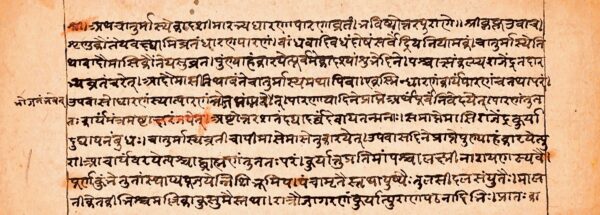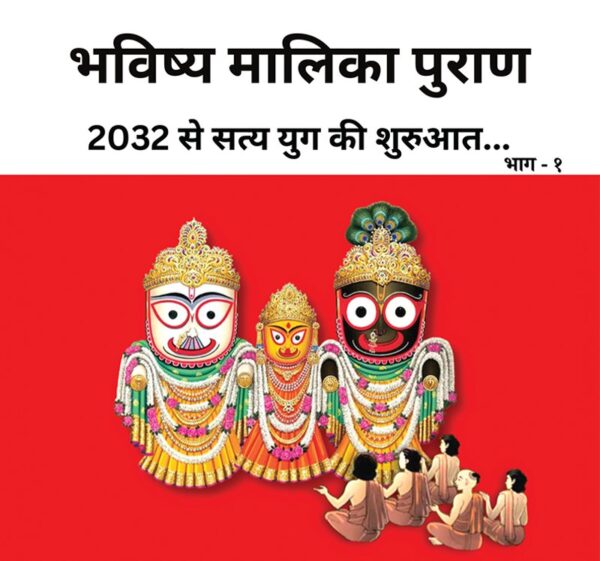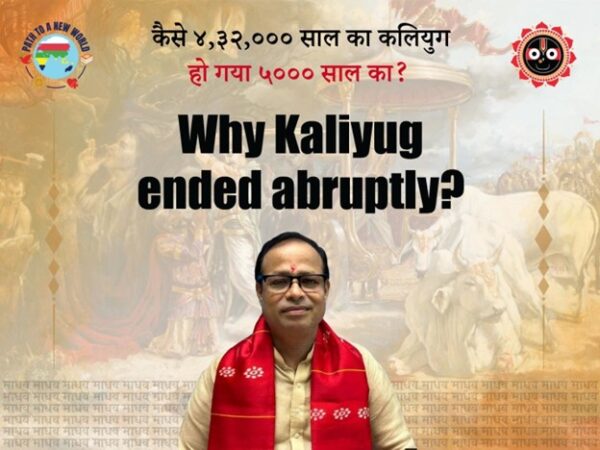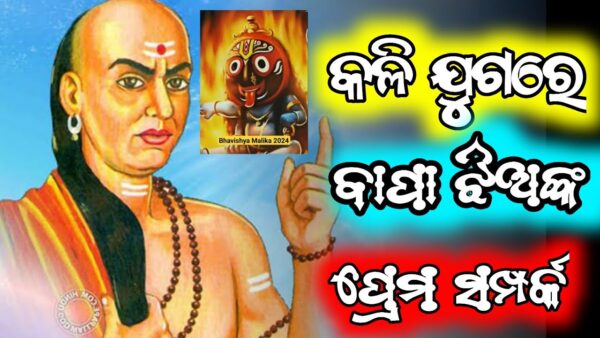Bhavishya Malika: Unraveling The Ancient Hindu Text’s Origin And Predictions

Bhavishya Malika is a fascinating ancient Hindu text filled with predictions about the future and the impending end of the Kaliyuga. Written by the revered saint Achyutananda Das and his panchsakhas, this scripture has garnered significant attention and sparked a passionate debate among believers and skeptics. Is it an authentic source of precise prophecies, or are the predictions merely coincidences or clever manipulations? At Achaumart.vn, explore the origin, controversies, and examples of Bhavishya Malika’s predictions, and discover why this mystical text continues to captivate the minds of many.

| Key Takeaways |
|---|
| Bhavishya Malika is an ancient Hindu text containing predictions about the future. |
| The authorship of Bhavishya Malika is attributed to saint Achyutananda Das along with his panchsakhas. |
| The authenticity of the predictions in Bhavishya Malika is a subject of debate and controversy. |
| Believers argue that the prophecies mentioned in the text come true, while skeptics attribute them to coincidence or manipulation. |
| Social media platforms have become a battleground for critics, enthusiasts, and curious minds to discuss Bhavishya Malika. |
| The debate between whether Bhavishya Malika is real or fake continues, with examples of both accurate and inaccurate predictions. |
| The potential impact of the asteroid 2007 FT3 in 2024 adds another element to the discussion. |
I. About Bhavishya Malika
An Ancient Hindu Text Filled with Predictions
Bhavishya Malika is an extraordinary ancient Hindu text that has fascinated individuals for centuries. This mystical scripture contains profound predictions about the future, captivating the minds of believers and skeptics alike. The text offers insights into the impending end of the Kaliyuga, also known as the dark age according to Hindu mythology. As people strive to unravel the mysteries of the universe and gain foresight about what lies ahead, Bhavishya Malika provides a unique perspective.
Authorship and Reverence
Bhavishya Malika is shrouded in reverence and attributed to the revered saint Achyutananda Das and his panchsakhas, who were his five close disciples. The authorship of Bhavishya Malika holds significant importance as it enables believers to place their trust in the text’s authenticity. Saint Achyutananda Das is celebrated as a spiritual guide with profound knowledge of the future, lending credibility to the predictions presented in the ancient text.
A Lens into the Future: Prophecies and Beyond
The appeal of Bhavishya Malika lies in its ability to offer prophetic glimpses into the future. Followers and enthusiasts pore over its verses, seeking insight into forthcoming events and the fate of humanity. The text delves into various aspects, describing significant historical occurrences and even providing details about potential leaders. Bhavishya Malika has garnered attention for both accurate and inaccurate predictions, which fuel debates among believers and skeptics.

II. Origin and Authorship of Bhavishya Malika
The Ancient Hindu Text with Mysterious Origins
Bhavishya Malika, an ancient Hindu text filled with prophetic revelations, has been surrounded by an air of mystery regarding its origins. This sacred scripture, also known as the “Garland of Prophecies,” is believed to have been composed centuries ago. Scholars and historians have traced its roots back to saint Achyutananda Das, who is credited as the author of Bhavishya Malika. Alongside him, his five disciples or panchsakhas are also said to have contributed to the text. The detailed insights and predictions contained within this remarkable manuscript continue to captivate individuals across generations.
The Revered Saint Achyutananda Das
Saint Achyutananda Das, the primary author of Bhavishya Malika, was a prominent figure in the Bhakti movement of medieval India. Born in the 16th century, he dedicated his life to the pursuit of spiritual knowledge and wisdom. Achyutananda Das was known not only for his immense devotion to Lord Jagannath but also for his exceptional poetic skills and profound knowledge of scripture. His compositions, including Bhavishya Malika, delved into the exploration and interpretation of future events, providing glimpses into the mysteries of time and existence.
An Evolving Text through the Centuries
Over the centuries, Bhavishya Malika has evolved and undergone various transformations, allowing for additions and reinterpretations by subsequent scholars and commentators. The text has been revered by believers as an authoritative source of precise prophecies, while skeptics raise questions about its originality and the accuracy of its predictions. Some argue that the predictions mentioned in Bhavishya Malika are open to subjective interpretation and selective attribution, making it difficult to determine the line between historical events and prophetic foresight.

III. Believers vs Skeptics: The Controversy
The authenticity of the predictions mentioned in Bhavishya Malika has been a subject of intense debate and controversy. On one side, we have the believers who firmly argue that the prophecies mentioned in the ancient text come true. They find significance in the alignment of events with the predictions, attributing it to the foresight and wisdom of saint Achyutananda Das and his panchsakhas. However, skeptics remain highly doubtful and skeptical. They consider the predictions to be purely coincidental, selectively interpreted, or cleverly manipulated to fit post-event scenarios. With such divergent opinions, the debate surrounding Bhavishya Malika’s authenticity continues to ignite passionate discussions among enthusiasts and critics alike.

IV. Online Debates and Social Media
The controversial nature of Bhavishya Malika has sparked intense debates and discussions on various social media platforms like Twitter and Quora. People from all walks of life join the conversation, sharing mixed reactions about this ancient text. Some argue that the prophecies mentioned in Bhavishya Malika have indeed come true, validating its authenticity. On the other hand, skeptics claim that these predictions are fabricated post-events or coincidences. This clash between believers and skeptics has turned social media into a battleground for critics, enthusiasts, and curious minds eager to unravel the truth behind Bhavishya Malika.

V. Fact or Fiction: Examples of Prophecies
Bhavishya Malika has been subject to scrutiny and evaluation regarding the accuracy of its predictions. Some instances align with real-world events, adding weight to the claims made in the ancient text. For example, the prediction of an invasion of India in 1757 did come true when the Battle of Plassey occurred, marking the British East India Company’s victory. Another notable prophecy was the rise of a powerful leader in 2014, which materialized when Narendra Modi became the Prime Minister of India. However, skeptics point to inaccurate predictions such as the destructive earthquake on October 8, 2005, which happened in Jammu and Kashmir instead of the predicted location. These examples fuel the ongoing debate about the authenticity of Bhavishya Malika’s prophecies.

VI. The Debate Continues: Real or Fake?
The authenticity of the predictions mentioned in Bhavishya Malika remains a heated subject of debate and controversy. Believers argue that the prophecies in the ancient text have come true, pointing to events such as the invasion of India in 1757 and the rise of Narendra Modi as the Prime Minister of India in 2014. However, skeptics raise doubts, attributing the apparent accuracy to coincidence, selective interpretation, or clever manipulation. Concrete evidence to support or disprove the predictions is still a point of contention. As the debate rages on, social media platforms like Twitter and Quora have become battlegrounds for critics, enthusiasts, and curious minds to express their opinions.

VII. Potential Impact in 2024: The Asteroid 2007 FT3
One of the intriguing aspects surrounding Bhavishya Malika is the potential impact of the asteroid 2007 FT3 in 2024. While astronomers have yet to pinpoint its exact orbital path due to limited observation time, there are possible flight paths that bring it within close proximity to Earth. NASA has identified 2007 FT3 as the fourth most likely asteroid to potentially collide with our planet. However, the wide margin of error makes it difficult to accurately predict if and where it will strike. Scientists have identified several potential impact times in the coming decades, with October 3, 2024, being the first on the list. It’s important to note that the probability of a collision remains low, and researchers assure us that there are no known asteroid threats to Earth in the next century. So, while the presence of 2007 FT3 adds an element of uncertainty, there is currently no need for alarm or panic.
VIII. Conclusion
The authenticity of Bhavishya Malika, an ancient Hindu text containing prophecies about the future, continues to be a subject of debate. While some believe in the accuracy of the predictions mentioned in the text, skeptics argue that they are based on coincidence or selective interpretation. The online debates and discussions on social media platforms like Twitter and Quora reflect the divided opinions surrounding Bhavishya Malika. Additionally, the potential impact of the asteroid 2007 FT3 in 2024 adds another layer to the ongoing conversation. Ultimately, the decision to consider Bhavishya Malika as true or fake rests with individual readers, who must critically evaluate the evidence and form their own conclusions.
Disclaimer: The information provided in this article has been collected and compiled from various sources, including Wikipedia.org and various newspapers. Although we have made diligent efforts to verify its accuracy, we cannot guarantee that every detail is completely accurate and verified. Therefore, we advise you to exercise caution when citing or using this article as a reference for your research or reports.







